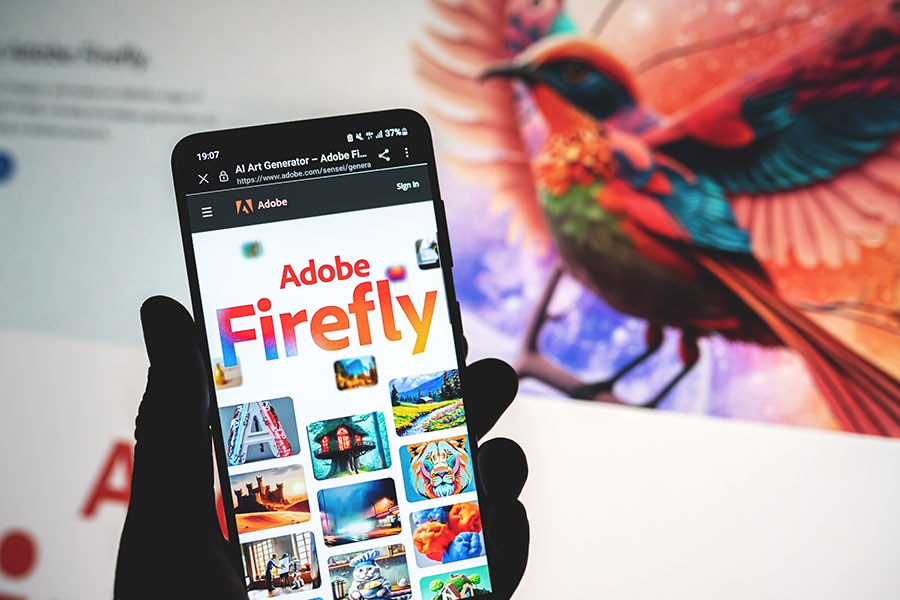
5 generative AI tools that caught creators' fancy in 2023
Software giants such as Google and Adobe, as well as specialist startups such as Runway and Descript, showcased new products or features this year that make being a creator a whole new experience
 Adobe, the giant company in the creativity software space—well known for software like Photoshop and Illustrator–that’s also gobbling up competitors like Figma, released Firefly earlier this year.
Image: Shutterestock
Adobe, the giant company in the creativity software space—well known for software like Photoshop and Illustrator–that’s also gobbling up competitors like Figma, released Firefly earlier this year.
Image: Shutterestock
1. Adobe Firefly
If you head over to firefly.adobe.com, right there on the screen is a simple interactive option to see how you can play around with images. Just moving the cursor side to side on the main image on the page slides over one option or the other, depending on which way you move the cursor.Adobe, the giant company in the creativity software space—well known for software like Photoshop and Illustrator–that’s also gobbling up competitors like Figma, released Firefly earlier this year. It’s now out of beta, barring newer features being added.
Just type natural language inputs into a ‘generate’ box that looks like the familiar search box, for what you’re looking for and Firefly will generate multiple image options and you can dive into one and start tweaking it, by adding more elements.
One way to do that is ‘generative fill’ through which you can select portions of an image and fill them with whatever you want, basically. Ask for an image of a sunrise and then add two moons if you like. Adobe is also attempting to make it clear that the images are AI-generated, by adding ‘generated by AI’ credentials to all such images.








